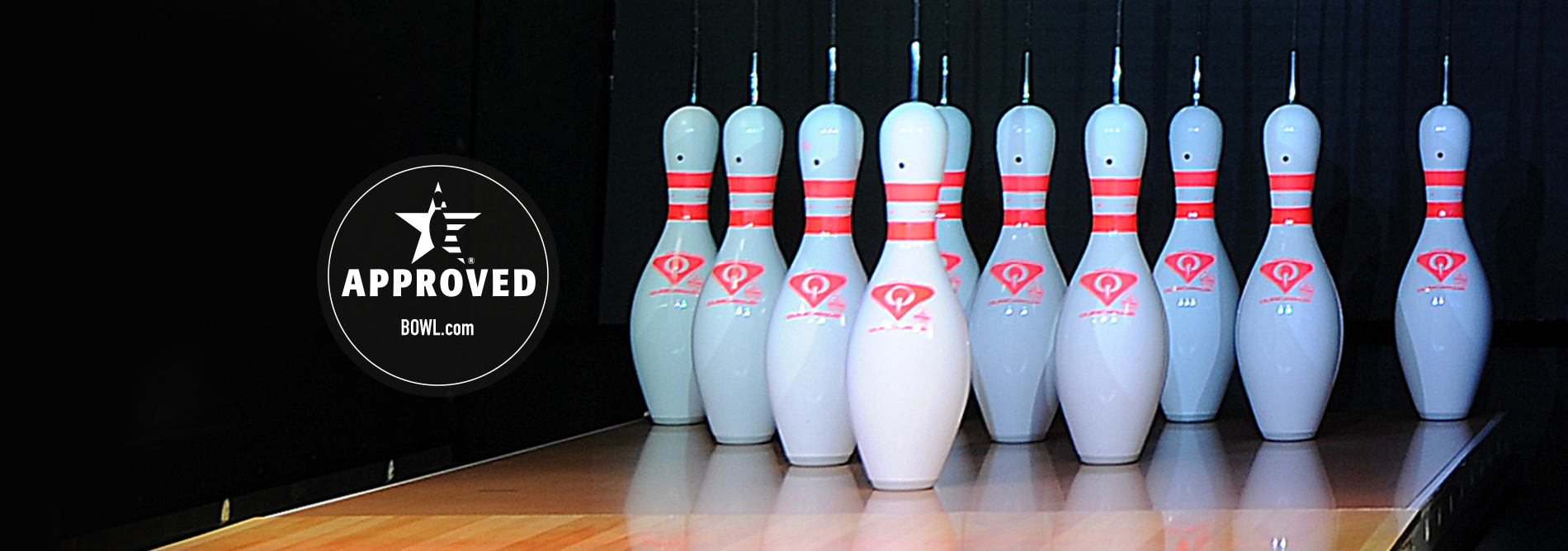The Business Case for EDGE String Pinspotter
And string machines are the top-selling pinspotting technology worldwide, outselling free-fall over 10 to 1.
EDGE String has been a huge win for our guests, our employees, and our business.
Graham Blackwell, Chief Commercial Officer, Tenpin, UK
Let’s take a look at the business case for replacing older free-fall bowling machines with EDGE String Pinspotter and what this means for your business and the game of bowling.
Operational Cost Savings
Pinspotter operating costs consist of three primary drivers: maintenance labor; replacement parts; and electricity expense.
EDGE String Pinspotter operating cost benefits VS free-fall bowling machines
MAINTENANCE LABOR EXPENSE
80%-90% LESS
This is the time bowling technicians spend on maintenance and day-to-day operation, and the cost of that labor. Bowling center maintenance labor is by far the largest operating cost driver and bowling centers that switched to EDGE String Pinspotters are seeing 80-90% reduction in labor expenses – and no longer struggle to find qualified technicians because it’s much easier to find people to operate and maintain EDGE String machines.
Conversely, EDGE String customers lucky enough to have talented technicians are retaining them and still realizing significant labor cost savings with EDGE String Pinspotter. How? By reassigning them to areas that eliminate other business costs and add value to the business.
MAINTENANCE LABOR EXPENSE
65%-85% LESS
This is the money spent to replace parts from wear and tear. It is typically the second largest operating cost driver, varying based on bowling machine type and condition, the center’s maintenance program, and experience level of the technicians. Typical centers with older free-fall machines spend between $350 and $700 per lane per year, and as high as $900 in some cases.
Conversely, EDGE String’s robust and low complexity design saves the typical bowling center 65% to 85% in replacement parts costs as compared to their old free - fall bowling machines.
ELECTRICITY EXPENSE
70%-90% LESS
Older free-fall machines, with their large, inefficient motors and electronics, generate significant electrical costs for bowling centers, especially in regions of the world where the cost of electricity is remarkably high.
EDGE String uses modern, extremely efficient 24V DC electronics and drive systems, resulting in power consumption that is less than the typical household coffee maker and saving centers between 70% and 90% on electrical expenses – and providing a more environmentally friendly solution.
Additional Cost Savings
Working capital and technician hiring and training costs are two additional cost drivers that should be considered as part of the overall business benefits of EDGE String.
Working Capital
Centers with older free-fall machines typically keep between $600-$1 thousand per lane in spare parts inventory. This is cash tied up and unavailable to invest in things that could produce more meaningful returns. When centers switch to EDGE String Pinspotters, they free a lot of this cash previously tied up in inventory – typically $400 or more per lane.
Technician Hiring and Training Expenses
Older free-fall machines are complex and finding qualified bowling technicians to maintain them is getting harder each year. It can cost anywhere between $2.5 thousand and $4 thousand to hire new bowling technicians – a meaningful expense, especially for centers that struggle with high turnover. Additionally, it can take 8 to 12 months for technicians who are new to bowling to become competent on older free-fall machines like A-2 and 82-70s.
By comparison, with EDGE String most people can be trained and comfortable with daily operation in an hour, basic maintenance within a few days, and well-versed within a few weeks.
Beyond the Numbers – Happier Bowlers, Better Staff Morale
We have discussed how EDGE String can save your bowling operations significant money and drive up profitability – but how EDGE String improves the guest experience and the work environment for employees are also important considerations, even if they are not straightforward to put dollar figures on.
Many EDGE String centers report their bowlers are happier because of the improved reliability as compared to free-fall machines – no more lanes down for long periods and refunds to unhappy guests.
Additionally, the recent specifications and certification of string machines by the United States Bowling Congress (USBC) has led to changes and evolution of EDGE String into a USBC-Approved machine that delivers authentic pin action and scoring in-line with free-fall – so the bowling experience on EDGE String is ideal for league and competitive sport play.
Lastly, EDGE String bowling centers are reporting staff morale is up - their employees are happier, less stressed, and more likely to stay because the bowling machines are easy, reliable and improve customer satisfaction rates.
A Low-Risk Investment
We’ve seen over and over that bowling centers choosing EDGE String Pinspotters realize significant operational savings - $2.75 thousand to $4 thousand per lane per year, and as high as $5 thousand in some cases - leading to increased profitability. Few investments are a sure bet; however, an investment in EDGE String is as close as you can get.
The typical EDGE String customer is seeing ROI within 3.5 years and often can essentially replace their free-fall bowling machines for free or little cost because the monthly operational savings are close to, or exceed, the monthly loan payment.
The ROI (return on investment) is predictable because it’s based on a center’s current operating cost (a known entity) and the expected operating costs with EDGE String (based on data from hundreds of centers).

